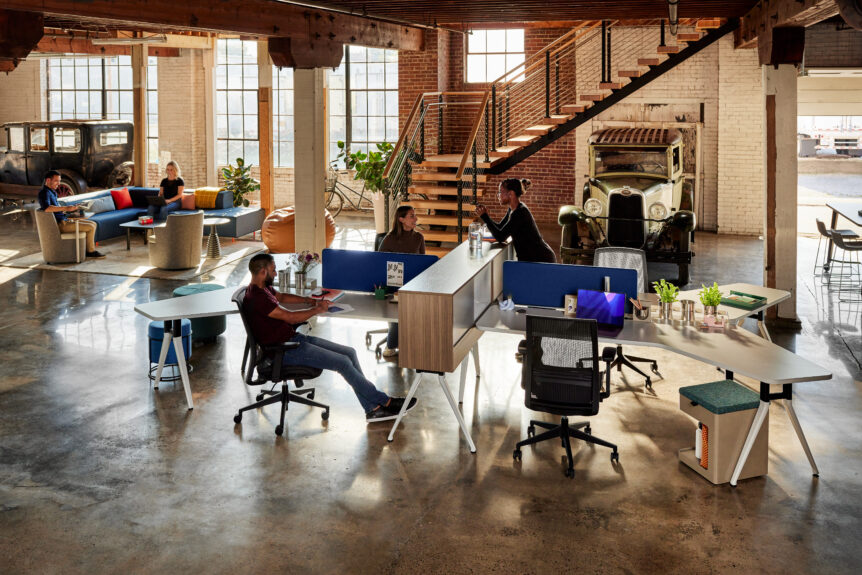In today’s competitive job market, companies are finding it increasingly difficult to attract and retain top talent. While salary and benefits packages are often cited as the most important factors in job satisfaction, the design and layout of an office can also play a significant role in employee happiness and productivity. In this article, we’ll explore how office furniture, office design, and interior design can be used to create a workspace that attracts and retains top talent.
Office Furniture: Beyond Comfort and Ergonomics
When it comes to office furniture, most people think about comfort and ergonomics. While these are important factors, they are not the only considerations. Office furniture also plays a critical role in creating a positive first impression for both employees and visitors. A well-designed office space that features high-quality, modern furniture can help to establish a sense of professionalism, competence, and care.
When selecting office furniture, it’s important to consider not only the functionality and comfort but also the aesthetic appeal. Choose furniture that complements the overall design of the office and reflects the company’s brand and culture. For example, if the company is focused on sustainability, eco-friendly furniture from sustainable vendors would be a great choice. Similarly, if the company is known for being cutting-edge and innovative, furniture with a sleek, modern design would be a better fit.
Office Design: Creating an Inspiring Workspace
The design of an office space is perhaps the most critical factor in creating a workspace that attracts and retains top talent. When designing an office space, it’s important to create an environment that is not only functional but also inspiring. Employees should feel energized and motivated when they step into the office, rather than bored or uninspired.
To create an inspiring workspace, start by considering the company’s brand and culture. What message does the company want to convey? What values does it hold? The design of the office should reflect these values and reinforce the company’s brand identity. For example, a company that values creativity and collaboration may choose an open-plan office with plenty of communal spaces, while a company that values privacy and focus may choose a more traditional layout with private offices.
Interior Design: Bringing It All Together
Once the office furniture and layout have been chosen, it’s time to focus on interior design. The interior design of an office is the final piece of the puzzle that brings everything together. It includes everything from the color scheme to the lighting to the artwork on the walls.
When it comes to color, it’s important to choose a palette that reflects the company’s brand and culture. Bright, bold colors may be appropriate for a creative, energetic company, while muted, sophisticated colors may be a better fit for a more traditional, conservative company.
Lighting is also an important consideration in interior design. Natural light is always best, but if that’s not possible, make sure to choose lighting that is bright and evenly distributed. Avoid harsh fluorescent lighting, which can be a source of discomfort and headaches.
Finally, artwork and other decorative elements can help to add personality and character to an office space. Consider displaying photographs of employees or the company’s accomplishments, or choose artwork that reflects the company’s values and mission.
Conclusion: The Importance of Office Design
In today’s competitive job market, it’s more important than ever to create a workspace that attracts and retains top talent. While salary and benefits packages are important, they are not the only factors that matter to employees. A well-designed office space that features high-quality furniture, an inspiring layout, and thoughtful interior design can help to create a positive, motivating environment that employees will be proud to be a part of.

